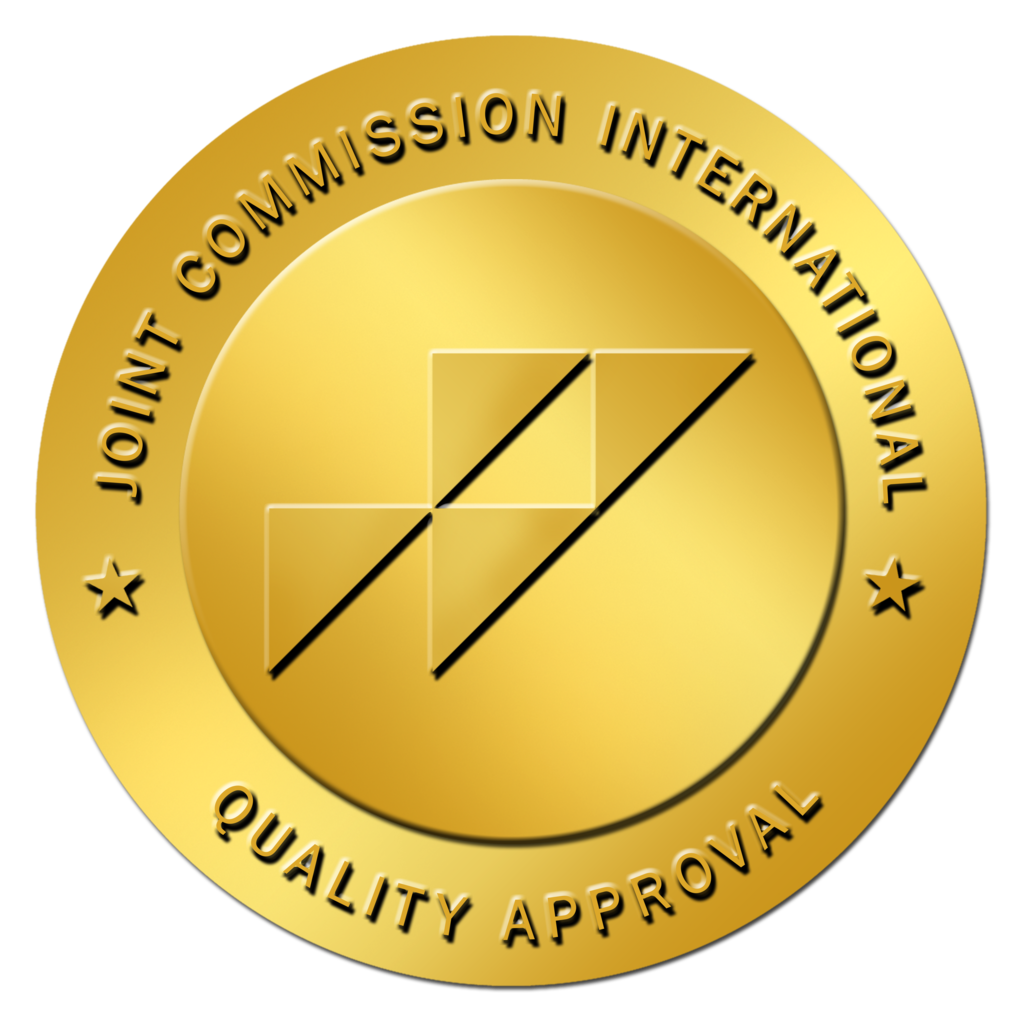Understanding Art Therapy Benefits
Art Therapy Overview
Art therapy is a specialized mental health profession that combines active art-making with psychological principles to enrich the lives of individuals, families, and communities. This form of therapy provides a safe space for clients to express their thoughts and emotions through creative processes, often leading to healing when words fall short. It is particularly beneficial for those experiencing challenges related to mental health, physical illness, or substance use disorder. Art therapy facilitates deeper insights and personal expression that can enhance traditional therapy methods. For more information on various therapeutic approaches, please see our individual therapy and expressive therapy sections.
Positive Outcomes of Art Therapy
Art therapy has demonstrated numerous positive outcomes, especially for individuals facing mental health disorders, such as depression, anxiety, schizophrenia, and autism. Research indicates that it effectively reduces suffering by providing an alternative means of expressing feelings and experiences that might be difficult to articulate verbally (PubMed Central).
Here are some key positive outcomes of art therapy:
| Outcome Category | Description |
|---|---|
| Emotional Healing | Allows individuals to process emotions and express feelings that they may find hard to verbalize. |
| Cognitive Improvement | Supports cognitive functions, particularly in individuals with cognitive impairments or dementias. |
| Relief from Terminal Illness | Provides comfort and a sense of control for patients with terminal conditions, such as cancer (CoveCare Center). |
| Enhanced Communication | Improves communication skills and helps individuals articulate experiences through creative expression. |
| Fostering Optimism | Instills hope and confidence, encouraging individuals to engage actively in their healing process. |
Art therapy can also serve as an auxiliary treatment in tandem with conventional assessments, offering medical professionals additional insights into a patient’s condition (Frontiers in Psychology). As such, it can be a valuable component of a comprehensive treatment plan for individuals undergoing detox and rehab programs.
Choosing to integrate art therapy in our recovery journey at Totality Treatment can significantly enhance our overall experience as we navigate the challenges of addiction and mental health. With a focus on finding the best methods for ourselves or a loved one, this therapeutic approach can provide unique benefits that complement other treatments, like cognitive behavioral therapy and mindfulness-based therapy.
Applications of Art Therapy
Art therapy offers a multifaceted approach to treatment, addressing various aspects of health and well-being. It has been particularly effective in managing mental health disorders, assisting those with physical illnesses, and supporting individuals struggling with substance use disorders.
Mental Health Disorders
Art therapy has been widely recognized for its benefits in treating various mental health disorders. It utilizes creative interventions, such as painting and drawing, to help individuals express emotions and improve mental well-being. Numerous studies have shown that art therapy can lead to significant improvements in symptoms related to depression and anxiety. For instance, patients with stable and pharmacologically treated major depressive disorder reported reduced symptoms of anxiety and depression when participating in art therapy sessions (PMC).
| Mental Health Disorder | Benefits of Art Therapy |
|---|---|
| Depression | Reduced symptoms, enhanced emotional expression |
| Anxiety | Decreased anxiety levels, improved coping skills |
| Schizophrenia | Improved emotional awareness, reduction in symptoms |
Art therapy is also beneficial for individuals with schizophrenia, where interventions have shown positive outcomes in emotional awareness and reduction of symptoms (PMC). Through its non-verbal methods, art therapy fosters a sense of security and encourages individuals to share their experiences in a safe environment.
Physical Illnesses
Art therapy has also been employed in managing physical illnesses, providing a complementary approach to traditional medical treatment. For patients experiencing chronic pain, anxiety, or depression associated with serious illnesses such as Alzheimer’s, art therapy can be particularly effective. Art interventions, like painting, have demonstrated improvements in pain reduction and overall quality of life (Frontiers in Psychology).
| Physical Illness | Benefits of Art Therapy |
|---|---|
| Alzheimer’s Disease | Pain reduction, improved mental health |
| Chronic Pain | Enhanced coping mechanisms, emotional relief |
| Cancer-related Stress | Improved quality of life, emotional expression |
Patients undergoing treatment for illnesses often face emotional turmoil. Art therapy provides a means to express feelings surrounding their condition, aiding in their emotional and psychological recovery.
Substance Use Disorder
Art therapy plays a vital role in addressing substance use disorders. By fostering self-expression and reflection, it helps individuals confront their thoughts and emotions related to addiction. Integrating art therapy into rehabilitation programs allows clients to explore the root causes of their addiction and develop healthier coping mechanisms.
| Substance Use Disorder | Benefits of Art Therapy |
|---|---|
| Alcohol Addiction | Enhanced self-reflection, coping strategies |
| Drug Addiction | Emotional expression, stress relief |
This creative approach not only aids in emotional healing but also complements other therapeutic modalities, such as individual therapy and group therapy addiction, enhancing the overall treatment experience. With the support of art therapy, individuals in recovery can develop a deeper understanding of themselves, fostering resilience on their journey to sobriety.
Art Therapy Techniques
Art therapy employs various techniques that encourage creative expression and utilize different artistic mediums to aid in emotional and psychological healing. These techniques play a vital role in our recovery journey, allowing us to process experiences and feelings.
Creative Expressions
Creative expression is at the heart of art therapy. Engaging in artistic activities provides an outlet for individuals to convey thoughts and emotions that may be difficult to articulate verbally. This therapeutic process allows us to explore our feelings in a safe environment, promoting emotional healing and resilience.
Artistic activities can range from painting and drawing to sculpture and collage-making. For many people, these forms of self-expression reduce anxiety and depressive symptoms. Research indicates that art therapy significantly alleviates symptoms of depression and anxiety across various populations, including students and older adults (PubMed Central).
By allowing emotions to surface through creative methods, we can uncover insights about ourselves. The therapeutic process often fosters a sense of empowerment, making it an essential aspect of our overall treatment plan.
Art Mediums
The choice of art mediums in therapy can greatly influence the therapeutic experience. Different materials can evoke varying emotions and responses, allowing us to choose what feels right for our personal expression. Common art mediums include:
| Medium | Benefits |
|---|---|
| Painting | Encourages exploration of colors and emotions; helps in reducing stress. |
| Drawing | Offers a straightforward way to express immediate feelings and ideas. |
| Sculpture | Engages tactile and three-dimensional expression; beneficial for fine motor skills. |
| Collage | Facilitates the mixing of materials and ideas; helps in visual storytelling. |
Art therapy has been successfully utilized not just for emotional healing but also for improving language and social skills in children with conditions such as cerebral palsy or autism (PMC).
Exploring various artistic mediums allows individuals to find the right fit for their personal healing journey. This exploration can lead to new ways of coping and can complement other therapeutic modalities such as mindfulness-based therapy and psychoanalytic therapy.
In summary, the techniques used in art therapy, including creative expressions and a variety of art mediums, enable us to process complex emotions and contribute positively to our recovery from addiction. Engaging actively in these artistic practices can enhance our overall wellbeing and foster deeper self-understanding.
Impact of Art Therapy
Emotional Healing
Art therapy outpatient programs provide a unique avenue for emotional healing. This therapeutic approach serves as a powerful form of communication, allowing individuals to express feelings that may be difficult to articulate verbally. For those struggling with mental health conditions like anxiety, depression, and PTSD, the process of creating art can reveal insights into their internal emotional states and past experiences (CoveCare Center).
Research shows that art therapy leads to significant reductions in anxiety and depression. Among the studies analyzing anxiety, it was found that 6 out of 7 studies reported a notable decrease in anxiety levels. Similarly, for depression, 6 out of 9 studies indicated significant reductions (NCBI Bookshelf). By addressing emotional wounds through creative expression, individuals can experience profound healing and a renewed sense of self.
| Emotional Improvement | Study Findings |
|---|---|
| Anxiety Reduction | 6 out of 7 studies show significant improvement |
| Depression Reduction | 6 out of 9 studies show significant improvement |
Cognitive Improvement
In addition to its emotional benefits, art therapy also demonstrates positive outcomes in cognitive improvement. It is extensively used to address various mental illnesses and cognitive impairments, fostering enhancements in cognitive function and overall mental well-being. Art therapy can be particularly beneficial for those impacted by conditions such as autism, schizophrenia, and dementia.
The creative process involved in art therapy not only aids in emotional expression but also enhances cognitive skills. Individuals engaging in art therapy report improvements in mood, coping mechanisms, and quality of life. This holistic approach has been shown to reduce suffering from mental symptoms while improving interpersonal relationships, thereby enhancing the quality of life (PMC).
| Cognitive Benefit | Observed Improvements |
|---|---|
| Mood Enhancement | Positive changes reported |
| Coping Skills | Improvement in coping mechanisms |
| Quality of Life | Overall enhancements noted |
Art therapy outpatient programs effectively address a range of mental health challenges, providing the necessary tools for both emotional healing and cognitive growth. Through creative expression, individuals are better equipped to navigate their recovery journey, leading to improved mental wellness overall.
Art Therapy in Practice
Art therapy is a versatile treatment modality that can benefit individuals experiencing a wide range of issues, particularly in the context of addiction and recovery. In this section, we will explore the various therapy settings where art therapy is implemented and discuss the benefits it offers to clients.
Therapy Settings
Art therapy is facilitated by professional art therapists in diverse environments, which allows us to cater to the unique needs of each individual or group. Common settings include:
| Therapy Setting | Description |
|---|---|
| Medical Institutions | Hospitals and rehabilitation centers where individuals can receive therapy alongside medical care. |
| Wellness Centers | Facilities focused on holistic approaches to health that integrate art therapy into comprehensive wellness programs. |
| Schools | Educational environments where students can utilize art therapy to address behavioral challenges, emotional distress, or trauma. |
| Independent Practices | Private therapy practices where individuals can receive personalized art therapy sessions tailored to their specific needs. |
In these settings, art therapists can work with individuals, couples, families, and groups to address personal and relational treatment goals. Art therapy engages the mind, body, and spirit uniquely, offering alternative modes of communication that empower both individual and communal transformation (American Art Therapy Association).
Client Benefits
The benefits of art therapy for clients are significant and multifaceted. These advantages extend to emotional, cognitive, and social domains. Some of the key benefits include:
| Client Benefit | Description |
|---|---|
| Increased Self-Esteem and Awareness | Art therapy fosters self-exploration and expression, helping clients develop a stronger sense of identity and self-worth. |
| Enhanced Emotional Resilience | Engaging in creative processes allows clients to process difficult emotions, promoting emotional healing and coping skills. |
| Improvement in Cognitive and Sensorimotor Functions | Art therapy enhances cognitive abilities and motor skills, aiding in cognitive improvement during recovery. |
| Better Communication Skills | The visual and symbolic expression in art therapy provides clients with nonverbal ways to communicate feelings, enhancing their interpersonal skills. |
| Conflict Resolution | Clients can explore and resolve internal and external conflicts through creative expression, which can lead to reduced distress. |
Art therapy offers individuals, regardless of their artistic skill levels, a unique opportunity to express vulnerability and gain control over their emotions. The healing power of creative expression is evident, particularly in recovery contexts such as substance use disorders. For more insights into the various therapeutic approaches available, consider exploring options like cognitive behavioral therapy, mindfulness-based therapy, and group therapy addiction.
Professional Art Therapists
Role of Art Therapists
Art therapists are crucial in the recovery process for individuals seeking treatment for substance use and mental health issues. These trained professionals hold Master’s degrees in art and therapy, providing them with the expertise to blend therapeutic techniques with creative expression. They work in various environments, including medical institutions, wellness centers, schools, and private practices (American Art Therapy Association).
The primary role of an art therapist involves guiding clients through the creative process, allowing them to explore and express their emotions in ways that traditional verbal communication may not facilitate. By engaging in art therapy, clients can confront feelings of anxiety, depression, and trauma in a safer, less confrontational manner. This approach not only promotes emotional healing but also fosters self-discovery and empowerment.
An integral part of their role is to understand the unique psychological needs of each individual. By tailoring sessions to include specific art mediums, art therapists can effectively connect with clients, helping them navigate their recovery journey while developing new coping strategies. The artistic process can serve as an important therapeutic tool, allowing individuals to process complex feelings related to their addiction or mental health struggles.
Therapeutic Relationships
The relationship between an art therapist and a client is fundamental to the effectiveness of art therapy. These professionals establish a safe, trusting environment where clients feel comfortable expressing themselves through art. This bond is critical to fostering a sense of security, enabling clients to open up about sensitive and challenging topics impacting their lives.
In art therapy, therapists employ empathy and active listening to ensure that clients feel heard and understood. They also provide constructive feedback, fostering an environment where clients can reflect on their experiences and emotions while creating art. This supportive relationship is essential for clients, particularly those dealing with trauma, as it nurtures their personal growth and recovery.
Additionally, art therapists recognize the importance of collaborative work within group settings. They facilitate group sessions that promote shared experiences among participants, helping to build community and solidarity among individuals facing similar challenges. Such interactions can be instrumental in reducing feelings of isolation and increasing feelings of belonging, thus enhancing the overall therapeutic experience.
Choosing art therapy outpatient programs like those offered at Totality Treatment allows individuals to engage in these valuable therapeutic relationships while actively participating in their recovery process. For more insights into the integration of various therapeutic methodologies, explore our articles on cognitive behavioral therapy, dialectical behavior therapy, and mindfulness-based therapy.















